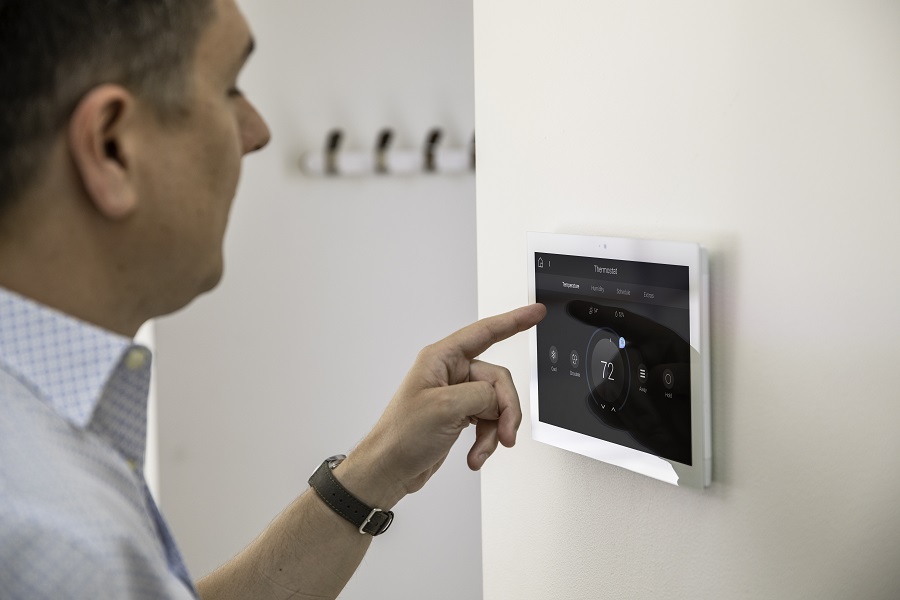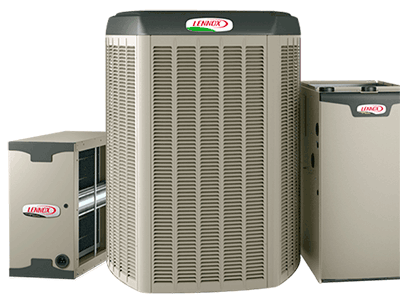Why Voice-Controlled Climate Systems Will Dominate in 2025
Feb 12, 2025

In 2025, smart homes are no longer a vision of the future—they’re an integral part of everyday life for homeowners seeking greater convenience, comfort, and control. One of the standout innovations leading this charge is voice-controlled climate systems. With advancements in artificial intelligence (AI) and smart home integration, voice commands have become a primary way to manage heating and cooling systems, making remote controls and manual thermostat adjustments feel outdated.
Voice-controlled climate systems are set to dominate in 2025 due to their ease of use, enhanced personalization, and seamless integration with other smart devices. This article explores why this technology is poised to become a household essential.
1. Convenience at Your Command
The biggest draw of voice-controlled climate systems is the convenience they offer. Instead of walking to a thermostat or fumbling with a phone app, homeowners can simply use voice commands to adjust the temperature. Whether you’re cooking in the kitchen, relaxing on the couch, or waking up in the morning, a quick “Hey, turn the heat up to 72 degrees” makes managing your home’s climate effortless.
For families with busy schedules or individuals with mobility limitations, this hands-free control can be a game-changer. The ability to manage your HVAC system from any room using your voice ensures that comfort is always within reach, no matter what you’re doing.
2. Seamless Integration With Smart Home Ecosystems
Voice-controlled climate systems in 2025 are designed to work seamlessly with the broader smart home ecosystem. Devices like Amazon Alexa, Google Assistant, and Apple’s Siri have become smarter and more compatible with a wide range of HVAC systems.
This integration allows homeowners to create automated routines that synchronize climate control with other smart devices. For example:
By working in harmony with other devices, voice-controlled climate systems enhance both convenience and energy efficiency.
Upgrade to a voice-controlled climate
Make your home smarter and more efficient with voice-controlled climate systems that seamlessly integrate with your existing smart home ecosystem. Simplify your daily routines with automated temperature adjustments and sync your HVAC with other devices for convenience and energy savings.
3. Enhanced Personalization and Adaptive Learning
Voice-controlled climate systems don’t just follow commands—they’re becoming smarter with adaptive learning features. In 2025, many of these systems can recognize individual household members’ voices and adjust settings based on their preferences.
For example, when one family member says, “Set the temperature to my preferred setting,” the system can automatically adjust to their ideal temperature. This personalized approach ensures that every member of the household can enjoy a tailored experience without needing to manually adjust the system each time.
Additionally, these systems can learn from your routines and habits. Over time, they anticipate your needs and make proactive adjustments. For instance, they can pre-warm or pre-cool your home based on the time of day or detect when windows are open and pause climate control to conserve energy.
4. Increased Energy Efficiency and Cost Savings
Voice-controlled climate systems contribute to better energy efficiency by making it easier for homeowners to make real-time adjustments. Instead of forgetting to turn down the heat before leaving the house, you can issue a voice command on your way out the door.
Many voice-controlled systems are also integrated with energy-monitoring features, which provide feedback on your energy usage and suggest ways to improve efficiency. These suggestions might include simple recommendations like lowering the thermostat during sleeping hours or alerts to remind you to change air filters for better airflow.
By making climate control more accessible and intuitive, voice-controlled systems empower homeowners to use energy more efficiently, leading to lower utility bills.
Experience the future of home comfort with Rinaldi’s voice-controlled climate systems
Seamlessly integrating with your smart home to provide ultimate convenience, energy efficiency, and personalized comfort—effortlessly at your command.
5. Accessibility for All Homeowners
Voice-controlled systems are particularly beneficial for elderly homeowners or individuals with mobility challenges, as they eliminate the need to physically interact with traditional thermostats. Instead of navigating complicated menus or mobile apps, homeowners can simply speak a command.
This ease of use makes it possible for anyone to manage their home’s climate with minimal effort. In 2025, as accessibility becomes a greater focus in smart home design, voice-controlled climate systems are emerging as an essential feature for creating inclusive, user-friendly living spaces.
6. Voice-Activated Maintenance Alerts and System Health Monitoring
Modern voice-controlled systems do more than adjust temperatures—they also provide valuable insights into your HVAC system’s health. In 2025, voice assistants can notify homeowners of potential issues, such as filter changes or maintenance reminders.
Imagine receiving an alert like, “Your air filter needs to be replaced soon. Would you like me to remind you next week?” or “Your system has been running longer than usual—consider scheduling maintenance.” This proactive approach helps homeowners stay ahead of potential problems and avoid costly repairs.
By combining voice control with system health monitoring, these climate systems ensure that your HVAC unit runs efficiently and reliably.
7. Compatibility With Advanced HVAC Features
In 2025, HVAC systems are becoming more advanced, with features like zoned climate control, humidity regulation, and AI-driven energy management. Voice-controlled systems can manage these features effortlessly. For example, you can say, “Lower the temperature in the upstairs bedrooms by two degrees” or “Turn off the dehumidifier in the living room,” and the system will respond instantly.
This compatibility with advanced HVAC features gives homeowners greater precision and flexibility in managing their home’s climate, making it easier to maintain ideal comfort levels in every room.
8. Competitive Pricing and Increased Availability
As the technology behind voice-controlled systems continues to advance, prices have become more affordable. In 2025, a wide range of voice-controlled climate systems is available to fit different budgets, from basic models with simple commands to high-end systems with advanced AI capabilities.
Additionally, many smart home devices are now compatible across multiple platforms, making it easier than ever for homeowners to integrate voice control without needing to replace their existing systems.
With increased availability and lower costs, voice-controlled systems have become a practical upgrade for homeowners looking to modernize their homes.
Conclusion
Voice-controlled climate systems are set to dominate in 2025 as a must-have smart home feature. With their hands-free convenience, seamless integration with smart home ecosystems, and adaptive learning capabilities, these systems offer a level of comfort and control that traditional thermostats can’t match.
Beyond convenience, voice-controlled systems contribute to energy efficiency, cost savings, and improved accessibility, making them a valuable investment for homeowners of all ages and lifestyles. As smart home technology continues to evolve, voice-controlled climate systems are transforming the way we interact with our homes—bringing us closer to a future where comfort is just a word away.
For homeowners looking to enhance their living experience and future-proof their homes, upgrading to a voice-controlled climate system in 2025 is a smart, forward-thinking decision.
Learn more about how voice-activated climate control can transform your home
Transform your home into a smarter, more accessible living space with voice-controlled climate systems that effortlessly manage your comfort and save you money in 2025.

